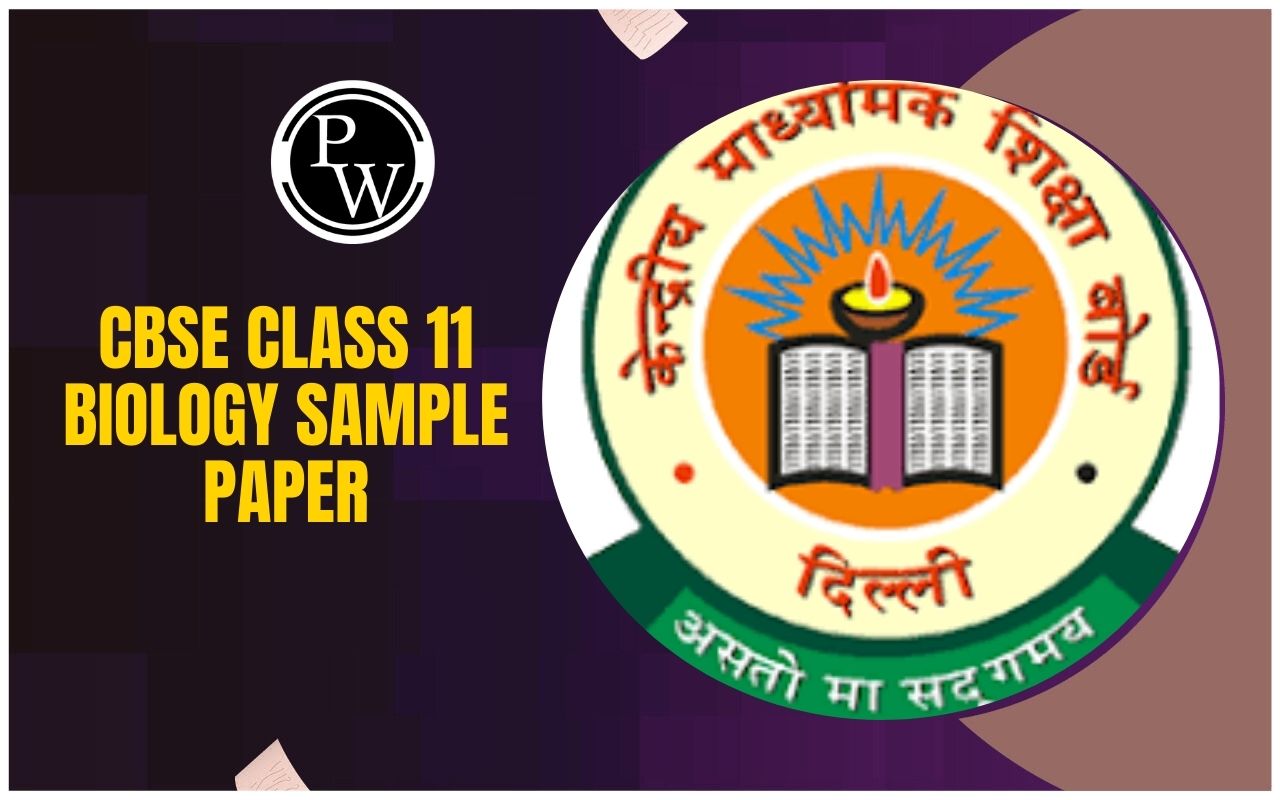
NCERT Solutions for Class 11 Biology: NCERT Solutions for Class 11 Biology provide a comprehensive guide for students to understand complex biological concepts effectively. These solutions cover all chapters in the syllabus providing detailed explanations and step-by-step answers to textbook questions.
By practicing these solutions, students can enhance their problem-solving skills, improve their exam preparation, and boost their confidence in biology. These solutions are a reliable resource for both revision and in-depth study.NCERT Solutions for Class 11 Biology Chapter Wise Overview
Here’s an overview of the NCERT Solutions for Class 11 Biology which provides detailed explanations and solutions for each chapter. These solutions help students grasp complex concepts and improve their understanding of key topics in biology.Chapter 1 - The Living World : This chapter introduces the concept of life, its characteristics, and the diversity of living organisms. It explains the processes of classification and taxonomy, the role of scientists, and the criteria used to classify organisms into different kingdoms.
Chapter 2 - Biological Classification : This chapter focuses on the classification of living organisms. It explains the five-kingdom classification system (Monera, Protista, Fungi, Plantae, Animalia), highlighting the differences between prokaryotes and eukaryotes and exploring various biological kingdoms.
Chapter 3 - Plant Kingdom : The chapter explores the classification of plants, focusing on their morphology and reproductive processes. It discusses different plant groups such as algae, bryophytes, pteridophytes, gymnosperms, and angiosperms.
Chapter 4 - Animal Kingdom : This chapter covers the classification of animals based on various characteristics like body symmetry, coelom formation, and modes of reproduction. It provides detailed insights into the phylum-wise classification of animals.
Chapter 5 - Morphology of Flowering Plants : The chapter explains the external structure of plants, including the root, stem, leaf, flower, fruit, and seed. It also describes the modifications in these plant parts that help them adapt to different environments.
Chapter 6 - Anatomy of Flowering Plants : This chapter deals with the internal structure of plants, explaining the different plant tissues (meristematic and permanent), vascular tissues, and their functions in plant growth and nutrient transport.
Chapter 7 - Structural Organisation in Animals : This chapter covers the structure of different organ systems in animals, including the digestive, respiratory, circulatory, excretory, and nervous systems. It emphasizes the physiological processes that maintain life.
Chapter 8 - Cell: The Unit of Life : It introduces the cell as the basic unit of life. The chapter discusses prokaryotic and eukaryotic cells, their structures, and the functions of various organelles, such as the nucleus, mitochondria, and ribosomes.
Chapter 9 - Biomolecules : This chapter explores the chemical substances found in living organisms, such as carbohydrates, proteins, lipids, and nucleic acids. It also discusses their structures, functions, and importance in maintaining life processes.
Chapter 10 - Cell Cycle and Cell Division : This chapter explains the processes of cell division (mitosis and meiosis), the cell cycle, and the stages involved in cell growth, DNA replication, and division for reproduction and tissue regeneration.
Chapter 11 - Photosynthesis in Higher Plants : It covers the process of photosynthesis, how plants convert light energy into chemical energy, and the role of chlorophyll. The chapter explains both light-dependent and light-independent reactions of photosynthesis.
Chapter 12 - Respiration in Plants : This chapter discusses how plants obtain energy through respiration, covering both aerobic and anaerobic respiration. It explains the stages involved, including glycolysis, Krebs cycle, and electron transport chain.
Chapter 13 - Plant Growth and Development : The chapter focuses on how plants grow and develop, explaining the factors that influence plant growth. It discusses hormones like auxins, gibberellins, and cytokinins that regulate plant growth and development.
Chapter 14 - Breathing and Exchange of Gases : This chapter focuses on the mechanisms of breathing and the exchange of gases (oxygen and carbon dioxide) in the lungs and other respiratory organs, explaining the physiology behind respiration in humans and animals.
Chapter 15 - Body Fluids and Circulation : It discusses the circulatory system, including the heart, blood vessels, and blood. The chapter covers the structure of the heart, blood circulation, and the transportation of nutrients, gases, and waste products.
Chapter 16 - Excretory Products and Their Elimination : This chapter explains how the body eliminates waste products through the excretory system. It discusses the structure and function of kidneys, nephron, and the processes involved in the formation and elimination of urine.
Chapter 17 - Locomotion and Movement : The chapter focuses on how animals achieve movement, including the structure and function of muscles, bones, and joints. It discusses different types of movements and the physiology behind locomotion.
Chapter 18 - Neural Control and Coordination : This chapter explains the nervous system, its structure, and functions. It covers neurons, the brain, and spinal cord, as well as the transmission of nerve impulses that control body functions and reactions.
Chapter 19 - Chemical Coordination and Integration : It explores the endocrine system, which regulates body functions through hormones. The chapter discusses the various endocrine glands, their hormones, and their effects on different physiological processes.
NCERT Solutions for Class 11 Biology Chapter Wise PDF
The NCERT Solutions for Class 11 Biology are available in chapter-wise PDFs, making it easier for students to download and access them. These PDFs contain detailed explanations and solutions for each chapter, helping students to understand complex biological concepts. The solutions are structured in a clear and concise manner, allowing students to effectively prepare for exams and enhance their understanding of key topics such as cell biology, plant physiology, and human anatomy.Benefits of Practicing NCERT Solutions for Class 11 Biology
Practicing NCERT Solutions for Class 11 Biology provide several benefits to students, helping them strengthen their understanding of key concepts and improve their academic performance:Clear Conceptual Understanding : The solutions provide detailed explanations of concepts in a simple and easy-to-understand manner, helping students build a strong foundation in biology.
Comprehensive Coverage : NCERT solutions cover all the topics in the syllabus, ensuring that students are prepared for every aspect of the exam.
Step-by-Step Solutions : Each question is answered with a step-by-step approach, making it easier for students to follow and grasp the process behind solving biological problems.
Improved Exam Preparation : By practicing these solutions, students can solve problems more efficiently, boost their confidence, and improve their speed and accuracy during exams.
Helps in Time Management : Regular practice of NCERT solutions helps students manage their time effectively during the exam, as they become familiar with the type of questions and the best approach to answer them.
Focus on Important Topics : NCERT solutions highlight the most important topics, helping students focus on areas that are frequently tested in exams.
Strengthens Problem-Solving Skills : Practicing solutions allows students to develop better problem-solving techniques, which are essential for tackling more complex questions.
Self-Assessment : By working through the solutions, students can assess their strengths and identify areas for improvement, leading to more focused revision and better exam results.
NCERT Solutions for Class 11 Biology FAQs
How do NCERT Solutions for Class 11 Biology help in exam preparation?
Can I use NCERT Solutions for Class 11 Biology for competitive exams?
Are NCERT Solutions for Class 11 Biology updated according to the latest syllabus?
Can I solve NCERT questions without referring to the solutions?
How can I improve my understanding of difficult topics in NCERT Biology?










